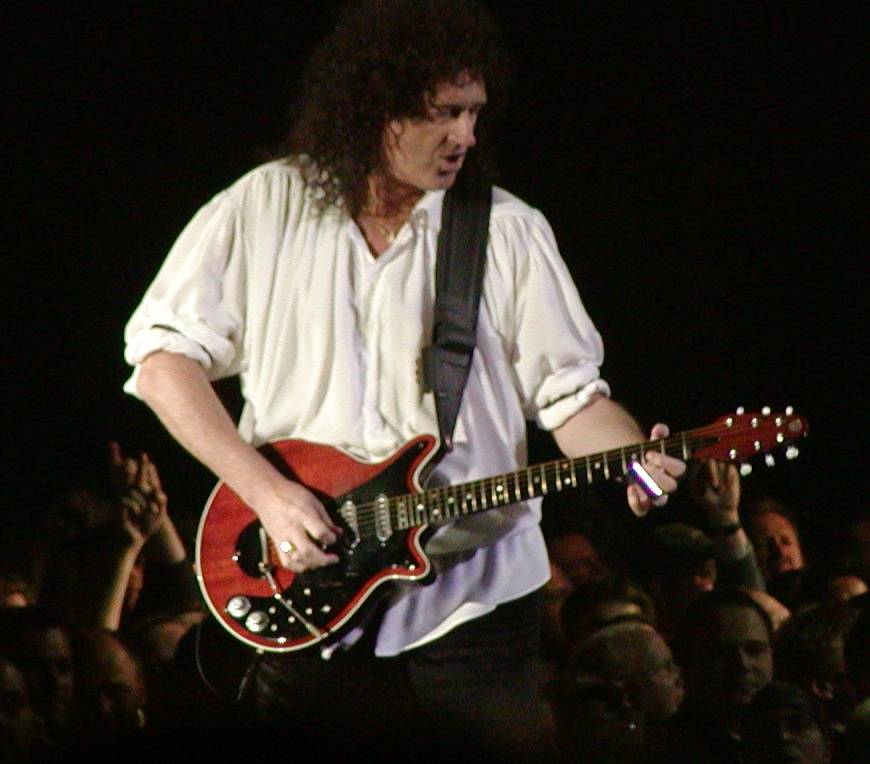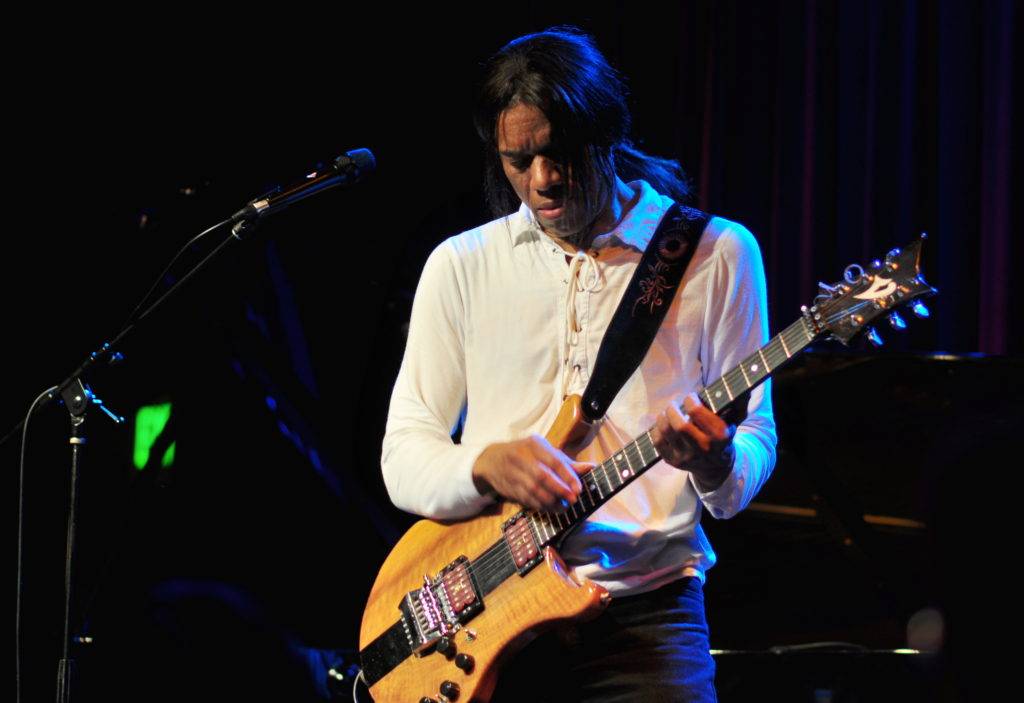
Ever wanted to start learning guitar? Here’s some tips I’ve picked up since I started out almost 30 years ago. Don’t make the same mistakes I did!
You need a goal or inspiration
Anyone can start learning guitar today, but to make any progress whatsoever you need a strong motivation. For me, it came from two sources. Firstly, my uncle handed me a copy of Queens Greatest Hits. Bare with me here, but at the time I was also a big fan of Monkey Magic, and in particular, the closing theme ‘Gandhara’. Connection? One of the closing guitar motifs in Bohemian Rhapsody, to me, had a peculiar eastern flavour to it, much like Gandhara. I don’t know why, but that very tenuous link sort of clicked with me, and I quickly became hooked on Queen.
However, my initial attempts at learning guitar were largely rudderless (more on that later) until one day I visited a friend’s house where my guitar playing world changed forever…
… As it turned out. My friend’s dad, Phil, was a guitarist, and spent every Saturday afternoon playing the guitar, as well as writing and recording original music on a Fostex 4-track cassette recorder, ably assisted by his co-writer, singer, guitarist and friend, Don. I was instantly intoxicated by the smokey, creative atmosphere, and from then on, visited most weekends.
Some days, we would listen to full albums by the Wishbone Ash, The Eagles, Led Zeppelin, you name it, always interspersed with our own guitar accompaniment, plus copies amounts of alcohol. Other days, one of us would have an idea or two, a song to build on, or even a complete song to record, but all the while I was learning guitar, getting inspired, but most of all, having fun!
From early on all I really wanted to do was emulate what my friend’s dad was doing, come up with ideas and capturing them onto tape. I believe each and every one us needs a goal and inspiration to set us on our way.
Be like Brian May and Phil!
Learn chords first!
Going back to the initial fascination with Queen, I pretty much started off on the wrong foot. Picking out Brian May‘s easiest solos from Queen Live at Wembley ’86, namely Who Wants to Live Forever. But here’s the thing: Learning lead lines is a one-off exercise, it’s not as transferrable as learning guitar chords.
I remember (very wrongly) believing ‘I’ll master lead first’, even indulging in ‘Slam-ons’ a two-hand tapping instruction book taking inspiration from the one and only Stanley Jordan. Learning guitar wasn’t supposed to be this difficult, was it?

No. Forget that. I didn’t really start to make progress until I embarked upon Russ Shipton’s Guide to Rock and Pop guitar. A 4-part book + accompanying cassette tape series. This taught me the basics, chords, chord changes, strumming rhythms, all the way up to different picking styles (e.g. arpeggios). What made it fun was it used examples from songs I would go on to know and love by the Eagles, the Beatles, etc. Yes, I was learning guitar, but I was also building up my repertoire and developing a style and musical taste.
Thanks for everything Russ!
Chord Changes : Anchor fingers
When changing chords, only move the fingers you need to move. If at all possible, keep at least one finger(s) in place as your anchor finger(s) and move the rest afterwards.
If you need to move all your fingers, pick the best one (for you) to move first (usually your index or middle finger but there are no rules), then let the others follow. By concentrating on the anchor finger(s) first (and with practice) you’ll begin to train your fingers to settle into the chords more quickly and easily.
Chord Changes : Timing above accuracy
I’ve been playing the guitar for over 25 years, and trust me, no matter how hard you practice, you won’t nail every chord change every time. The good news is: It doesn’t matter. What’s more important with chord changes (and strumming in particular) is maintaining the rhythm.
A muted/fluffed note in time is infinitely more pleasant to the ear than a perfectly fretted note off the beat, so focus on your timing first, and just do the best you can with the rest, without worrying too much.
Take away from chord changes: Anchor fingers and, above all, rhythm!
Repetition, finger memory and your guitar brain.
Russ Shipton’s The ‘Angel’ Song. I had almost completed part 4 of the series and was already looking forward to my next challenge, but here was my first brick wall: Arpeggiated chords.
At first, I was nowhere, struggling to pick out a single chord, my brain being befuddled by my first taste of chords and melody combined.
Top tip: Start slow and build up speed. But even at this slow pace, I didn’t seem to be making any progress at all.
The answer was, of course, I simply needed more practice and repetition, over a longer period of time. Practising every single day, the improvement started showing over weeks as opposed to days, and those incremental weekly improvements gradually fed my finger memory and guitar brain until, a good 3+ months later, I finally had the piece perfected.
So what is your finger memory and guitar brain?
Well, finger memory is akin to riding a bike, you learn it once and never forget. In guitar playing, once you’ve learned a piece, sometimes, even though your brain says you’ve forgotten it, the fingers still remember.
This is complemented by your guitar brain, or in other words your very own unlimited database of all things guitar-related. Take the ‘Angel’ example, I already knew the chords, filed away in my guitar brain, but I also needed to learn how to pick out the arpeggiated notes and train my fingers to do it (finger memory). In the end, all the individual elements of the exercise were archived away forever, waiting to be called upon, as a whole or separately.
The song and the exercise have stuck with me ever since and became an integral part of my own acoustic style and songwriting.
But your guitar brain isn’t just connected to your finger memory and your playing, It encompasses all your guitar knowledge: Theory, gear, tones, production, songwriting, live performance. It all gets fed in and integrated with existing knowledge, sometimes in suprising ways.
Put it another way, to improve as a guitarist, somedays you don’t even need to touch the guitar. Read a guitar related article for example, or watch a guitarist you’ve never seen before. It all get’s used, you could pick up a neat lick from YouTube and not realise it’s sunk in until you come to your usual solo spot, and out it comes, integrated into your own style! Nothing is ever wasted. The more that goes in, the more you’ll get out.
To improve as a guitar player, always look to be feeding your guitar brain and exercising your finger memory in any way and as often as you can.
Scales and theory
After completing the Russ Shipton course, I was eager to move onto exploring the fretboard and music theory. Watching the bands I was exposed to (and Phil of course) made me aware of the magical and previously unexplored world of improvisation.
After the copycat learning of before, it was time to get creative. This time, I went for the very comprehensive (and much drier) The Guitar Handbook and soaked it up like a sponge.
Scales and theory feed your guitar brain with the tools you need to be truly expressive on guitar. My first step was to learn the major scale, and luckily I already had the Eagle’s tracks from the Russ Shipton course as the perfect backing.
Playing along to those classic solos using only my brand-new scale knowledge was a light-bulb moment and an almost religious experience. For the first time ever I could see how the melodies were constructed, and further to that intervals and chords. Everything started to make sense and became easier.
The residents of the Saturday afternoon sessions could see my playing come on in leaps and bounds as I was now able to follow along and suggest musical ideas, even moving onto writing our and my own songs.
Learn theory, as limited theory equals limited expression.
Barre Chords.
Just as theory and scales open up the fretboard, Barre chords give you the ultimate flexibility for chording and accompaniment whilst also making the connection between chords and scales that eventually gets fed back into, you’ve guessed it, your guitar brain.
I have really only one tip here, and that’s to not spend your whole life mastering a perfect clean A barre chord. It’s impossible.
Do as I and countless others do, a 2-finger A-barre with the index and ring finger. Yeah it looks ugly and you never get the top E to ring clearly, but just don’t pick the top E.
If you really need that top E, use a part A-barre on the top 3 strings instead.
In fact, these days I don’t even bother with a 3-finger open A-chord, one barred index finger works fine 99% of the time.
To take barre chords to a more advanced level, they also open the door to playing across chords (famously employed by Brian May himself). This technique involves phrasing your solos across the appropriate barre chord as opposed to a scale. In other words, If the chord progression is E A B, Pick out the notes from the E barre, then A barre, then B barre. This is a valuable tool to get you out of the rut of playing the same old predictable pentatonic.
Barre chords are tough for the beginner, but take shortcuts and persevere.
Conclusion
Picking up the guitar is easy, but without inspiration and motivation you can’t expect to make much progress, so find it, early! Don’t make my mistake of learning the wrong things in the wrong order, and always look to be feeding your guitar brain and exercising your fingers, every day if you can.
Most of all, practice, and have fun!
More Guitar Lesson articles @ The Blogging Musician.
Leave a Reply